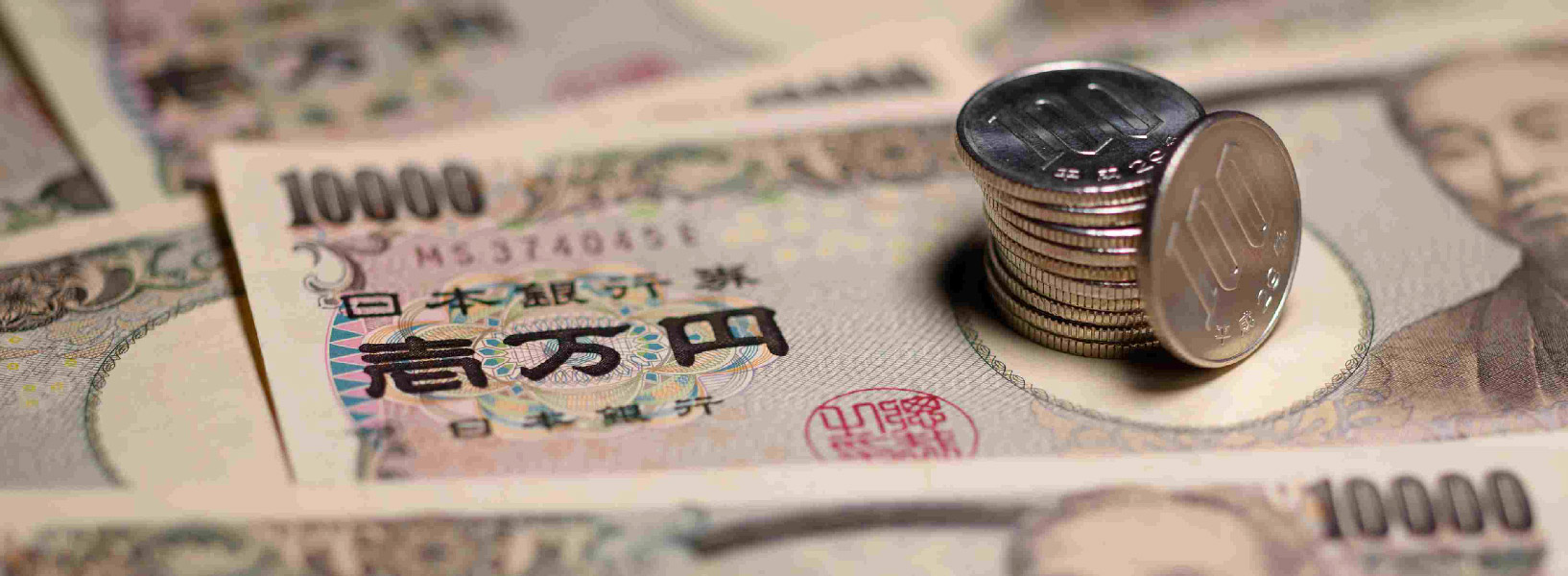ลูกศร 3 ดอกของอาเบะโนมิกส์สามารถผลักดันให้เงินเยนแข็งค่าขึ้นในปี 2024 ได้หรือไม่?
ในปี 2023 ดัชนีดอลลาร์สหรัฐฯ ปรับตัวลดลงเล็กน้อย 2% ซึ่งต่ำกว่าผลการดำเนินงานที่แข็งแกร่งของปีก่อนหน้า ซึ่งส่วนใหญ่เป็นผลมาจากท่าทีที่ก้าวร้าวของธนาคารกลางสหรัฐในปี 2022 โดยปรับขึ้นอัตราดอกเบี้ย 7 ครั้งจาก 0.5% เป็น 4.50% ความถี่และขนาดของการปรับขึ้นเหล่านี้ถือเป็นความท้าทายสำหรับนักลงทุนที่คุ้นเคยกับสภาพแวดล้อมอัตราดอกเบี้ยต่ำเป็นเวลานานนับตั้งแต่เกิดวิกฤตการณ์ทางการเงินระดับโลกในปี 2008 นอกจากนี้ เมื่อโลกฟื้นตัวจากการระบาดใหญ่ ลักษณะการฟื้นตัวทางเศรษฐกิจที่ไม่สามารถคาดเดาได้ก็ยิ่งเป็นเหตุผลที่ทำให้การขึ้นอัตราดอกเบี้ยของธนาคารกลางสหรัฐ (เฟด) ค่อย ๆ ชะลอตัวลงในปี 2023
ในทางกลับกัน เศรษฐกิจที่ใช้สกุลเงินหลัก ยกเว้นญี่ปุ่นและสวิตเซอร์แลนด์ ได้เข้มงวดนโยบายการเงินเพื่อตอบสนองต่อแรงกดดันด้านเงินเฟ้อในประเทศ ทำให้ส่วนต่างอัตราดอกเบี้ยกับดอลลาร์สหรัฐลดลง แม้จะมีความท้าทายเหล่านี้ ดัชนีดอลลาร์สหรัฐกลับลดลงเพียง 2% ในปี 2023 ซึ่งส่วนใหญ่เป็นผลมาจากการอ่อนค่าโดยรวมของเงินเยนของญี่ปุ่น ซึ่งเป็นองค์ประกอบที่ใหญ่เป็นอันดับสองของดัชนี
ค่าเงินเยนเทียบกับดอลลาร์สหรัฐอ่อนค่าลง 7% ตลอดปี 2023 โดยได้รับอิทธิพลจากท่าทีผ่อนปรนของธนาคารกลางญี่ปุ่นและนโยบายควบคุมเส้นอัตราผลตอบแทน นับตั้งแต่ที่ฟองสบู่เศรษฐกิจของญี่ปุ่นแตกในช่วงทศวรรษ 1990 การกระตุ้นการฟื้นตัวทางเศรษฐกิจถือเป็นความท้าทายอย่างต่อเนื่องของธนาคารกลางญี่ปุ่น นโยบาย "อาเบะโนมิกส์" ของอดีตนายกรัฐมนตรีชินโซ อาเบะ ซึ่งริเริ่มในปี 2012 รวมถึงนโยบายการเงินที่ก้าวร้าว เช่น การผ่อนคลายเชิงปริมาณขนาดใหญ่เพื่อรับมือกับวัฏจักรเศรษฐกิจที่เลวร้ายซึ่งเกิดจากภาวะเงินฝืดเป็นเวลานาน นโยบายเหล่านี้ รวมถึงเป้าหมายเงินเฟ้อ 2% การผ่อนคลายเชิงปริมาณแบบไม่จำกัด และอัตราดอกเบี้ยติดลบ ล้วนมีส่วนทำให้ค่าเงินเยนอ่อนค่าลงโดยตรงหรือโดยอ้อม ก่อนที่จะมีการบังคับใช้นโยบายอาเบะโนมิกส์ ค่าเงินเยนยังคงแข็งแกร่ง โดยได้รับประโยชน์จากแนวคิดเศรษฐกิจของเอเชียและอัตราดอกเบี้ยที่แตกต่างกันอย่างมากกับภูมิภาคพัฒนาแล้วอื่นๆ อย่างไรก็ตาม ความแข็งแกร่งของเงินเยนกลับกลายเป็นอ่อนค่าลง และอัตราแลกเปลี่ยน USD/JPY ซึ่งสูงสุดที่ 110 ในเดือนสิงหาคม 2008 ก็ร่วงลงสู่จุดต่ำสุดที่ 76 ในต้นปี 2012 ส่งผลให้การส่งออกของญี่ปุ่นได้รับแรงกดดันอย่างหนัก

ในปี 2022 ชินโซ อาเบะ ถูกลอบสังหารอย่างน่าเศร้า แต่ "ลูกศรสามดอก" ของอาเบะโนมิกส์ของเขาถูกใช้มาเป็นเวลากว่าทศวรรษแล้ว ตอนนี้ถึงเวลาที่จะประเมินประสิทธิภาพของมันและดูว่ามันจะส่งผลกระทบต่อแนวโน้มในอนาคตของเงินเยนในปี 2024 ต่อไปหรือไม่ ข้อมูลปัจจุบันบ่งชี้ว่าอัตราเงินเฟ้อของญี่ปุ่นยังคงอยู่เหนือ 3% อย่างสม่ำเสมอตลอดปี 2023 (2.8% ในเดือนพฤศจิกายน โดยข้อมูลเดือนธันวาคมยังรอการสรุป) ค่าเฉลี่ยระยะยาวยังสูงถึง 2.42% แสดงให้เห็นถึงการบรรลุเป้าหมายเงินเฟ้อ 2% อย่างไรก็ตาม เมื่อฮารุฮิโกะ คุโรดะเข้ารับตำแหน่งผู้ว่าการธนาคารกลางญี่ปุ่นคนใหม่ในเดือนเมษายน 2023 นักลงทุนคาดการณ์ว่านโยบายจะมีการเปลี่ยนแปลงที่สำคัญ ในความเป็นจริง คุโรดะไม่ได้สร้างความประหลาดใจที่สำคัญใดๆ เนื่องจากธนาคารกลางญี่ปุ่นปรับกรอบการควบคุมเส้นอัตราผลตอบแทนเพียงสองครั้งในช่วงครึ่งหลังของปี โดยลดความสำคัญของการพูดคุยเกี่ยวกับการซื้อพันธบัตรรัฐบาลญี่ปุ่นแบบไม่จำกัดจำนวนครั้ง แต่ยังคงนโยบายอัตราดอกเบี้ยติดลบ การเคลื่อนไหวครั้งนี้ส่งผลให้ค่าแลกเปลี่ยน USD/JPY สูงขึ้นโดยตรง โดยทะลุ 150 ในเดือนตุลาคมและพฤศจิกายน

แม้ว่าค่าเงินเยนที่อ่อนค่าลงจะส่งผลดีต่อเศรษฐกิจที่เน้นการส่งออกของญี่ปุ่น แต่ระดับเงินเยนที่ต่ำเกินไปยังเพิ่มความเสี่ยงต่อวิกฤตหนี้สาธารณะอีกด้วย ในอดีต เมื่ออัตราแลกเปลี่ยนเงินเยนต่ำเกินไป ธนาคารกลางญี่ปุ่นจะเข้ามาแทรกแซงตลาดโดยตรง แม้ว่าเงินเยนจะฟื้นตัวอย่างมีนัยสำคัญจากระดับต่ำสุดในช่วงกลางเดือนพฤศจิกายน แต่สิ่งนี้ขับเคลื่อนโดยการคาดการณ์ของตลาดว่าธนาคารกลางสหรัฐฯ จะเปลี่ยนมาใช้การปรับลดอัตราดอกเบี้ยในปี 2024 แทนที่จะคาดการณ์การเปลี่ยนแปลงนโยบายของธนาคารกลางญี่ปุ่น ดังนั้น ในสัปดาห์แรกของปีใหม่ USD/JPY จึงเพิ่มขึ้นแล้วเกือบ 3% ซึ่งเน้นย้ำว่าทิศทางนโยบายของธนาคารกลางญี่ปุ่นน่าจะกำหนดทิศทางของเงินเยนในปีหน้า
นอกจากเป้าหมายเงินเฟ้อที่บรรลุ 2% และแนวโน้มการปรับขึ้นอัตราดอกเบี้ยทั่วโลกในช่วง 2 ปีที่ผ่านมาแล้ว ปัจจัยสำคัญอีกประการหนึ่งที่สนับสนุนให้ธนาคารกลางญี่ปุ่นเลิกใช้ท่าทีผ่อนปรนมากคือการคาดการณ์ว่าค่าจ้างโดยรวมจะเพิ่มขึ้นในปี 2024 ซึ่งน่าจะสูงกว่าอัตราเงินเฟ้อ ในช่วงต้นปี 2023 บริษัทญี่ปุ่นซึ่งนำโดยผู้เล่นหลักอย่างโตโยต้าได้ปรับขึ้นค่าจ้างมากกว่า 3% สถาบันวิจัยในประเทศขนาดใหญ่คาดการณ์ว่าการปรับขึ้นเงินเดือนในปี 2024 อาจสูงถึง 3.7% หากการปรับขึ้นค่าจ้างโดยรวมนี้เกิดขึ้นจริง อาจส่งผลดีต่อธนาคารกลางญี่ปุ่น เมื่อลมแรงนี้เริ่มพัดมา แม้ว่าจะยังไม่มีการเปลี่ยนแปลงนโยบายการเงินที่แท้จริง เงินเยนอาจมีศักยภาพที่จะหลุดพ้นจากการลดลงที่ยาวนานกว่าทศวรรษได้

เมื่อมองไปข้างหน้าในช่วงครึ่งแรกของปี 2024 ถือเป็นเรื่องที่น่าสังเกตว่าญี่ปุ่นจะค่อยๆ เปิดตัวธนบัตรรุ่นใหม่ๆ ออกสู่ตลาด ในฐานะคนที่ชื่นชอบธนบัตรมูลค่าหนึ่งหมื่นเยนมาโดยตลอด ไม่เพียงเพราะเป็นสกุลเงินที่มีมูลค่าสูงสุดของญี่ปุ่นเท่านั้น แต่ยังเป็นเพราะภาพของยูกิจิ ฟูกูซาวะ บุคคลสำคัญในสมัยเมจิของญี่ปุ่นอีกด้วย ฟูกูซาวะเป็นนักการศึกษาและนักคิดที่มีส่วนสนับสนุนเศรษฐกิจญี่ปุ่นสมัยใหม่เป็นอย่างมาก โดยเป็นหนึ่งในบุคคลแรกๆ ที่แนะนำทฤษฎีเศรษฐกิจให้กับเอเชีย ผลงานเขียนของเขามีอิทธิพลอย่างลึกซึ้งต่อชุมชนปัญญาชนของญี่ปุ่น หากคุณได้รับธนบัตรมูลค่าหนึ่งหมื่นเยนที่มีภาพของฟูกูซาวะ โปรดพิจารณาเก็บรักษาไว้และใช้เวลาศึกษาทฤษฎีของเขา ธนบัตรดังกล่าวอาจให้ข้อมูลเชิงลึกที่คาดไม่ถึงในอนาคต!























